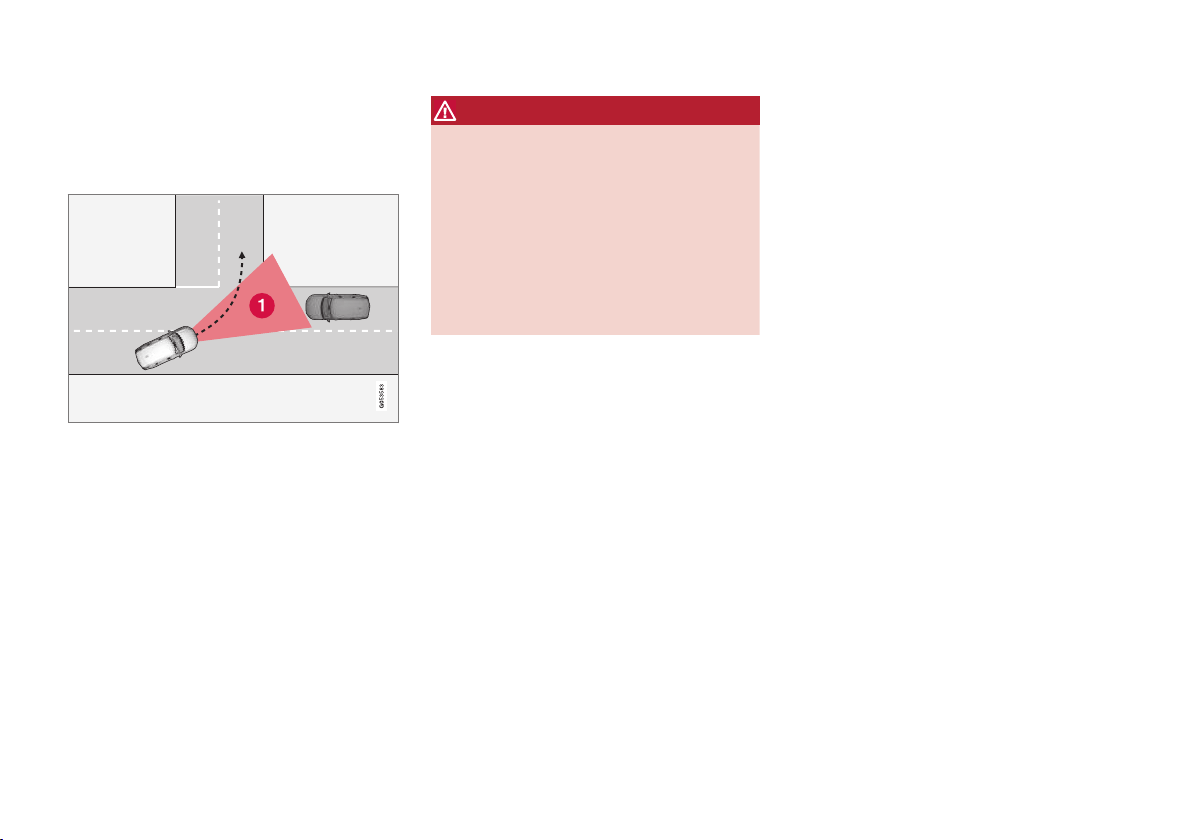Loading ...
Loading ...
Loading ...

DRIVER SUPPORT
277
City Safety in crossing traffic
City Safety can help the driver when making a
left turn in an intersection.
Turning at an intersection
1. The area in which City Safety can detect an oncoming
vehicle
In order for City Safety to detect an approaching
vehicle in situations where there is a risk of a col-
lision, that vehicle must be within City Safety's
range (the red area in the illustration).
The following criteria must also be met:
•
your vehicle's speed must be at least 3 mph
(4 km/h)
•
the approaching vehicle's headlights must be
on
WARNING
•
City Safety is a supplementary driving aid
and does not function in all driving situa-
tions or in all traffic, weather or road con-
ditions.
•
Warnings and braking for an approaching
vehicle will usually come at a very late
stage.
•
The driver is responsible for maintaining a
safe distance and speed. Never wait for a
warning or for City Safety to take action.
Limitations
In certain situations, it may be very difficult for
City Safety to help the driver avoid a collision with
an approaching vehicle in crossing traffic, for
example:
•
on slippery roads when Electronic Stability
Control is active
•
if the approaching vehicle is detected at a
late stage
•
If the approaching vehicle is partially
obscured by another vehicle
•
if the approaching vehicle moves erratically
(e.g., sudden lane changes at a late stage)
Related information
•
City Safety™ (p. 273)
•
City Safety limitations (p. 278)
Rear Collision Warning (RCW)
The
Rear Collision Warning with braking at
standstill (RCW) function can help the driver
avoid rear-end collisions.
RCW is activated automatically each time the
engine is started and cannot be turned off.
RCW can warn the driver of a vehicle approach-
ing yours from behind by rapidly flashing your
rear turn signals.
RCW is only activated when a vehicle is rapidly
approaching your vehicle from behind.
At speeds below 20 mph (30 km/h), if RCW
determines that your vehicle is at risk of a rear-
end collision, the front seat belt pretensioners
and the Whiplash Protection System are acti-
vated.
Just prior to the collision, the brakes are also
applied to help reduce your vehicle's forward
movement if and when the collision occurs. How-
ever, this can only happen if your vehicle is sta-
tionary.
The brakes will be released immediately if the
accelerator pedal is pressed.
Loading ...
Loading ...
Loading ...